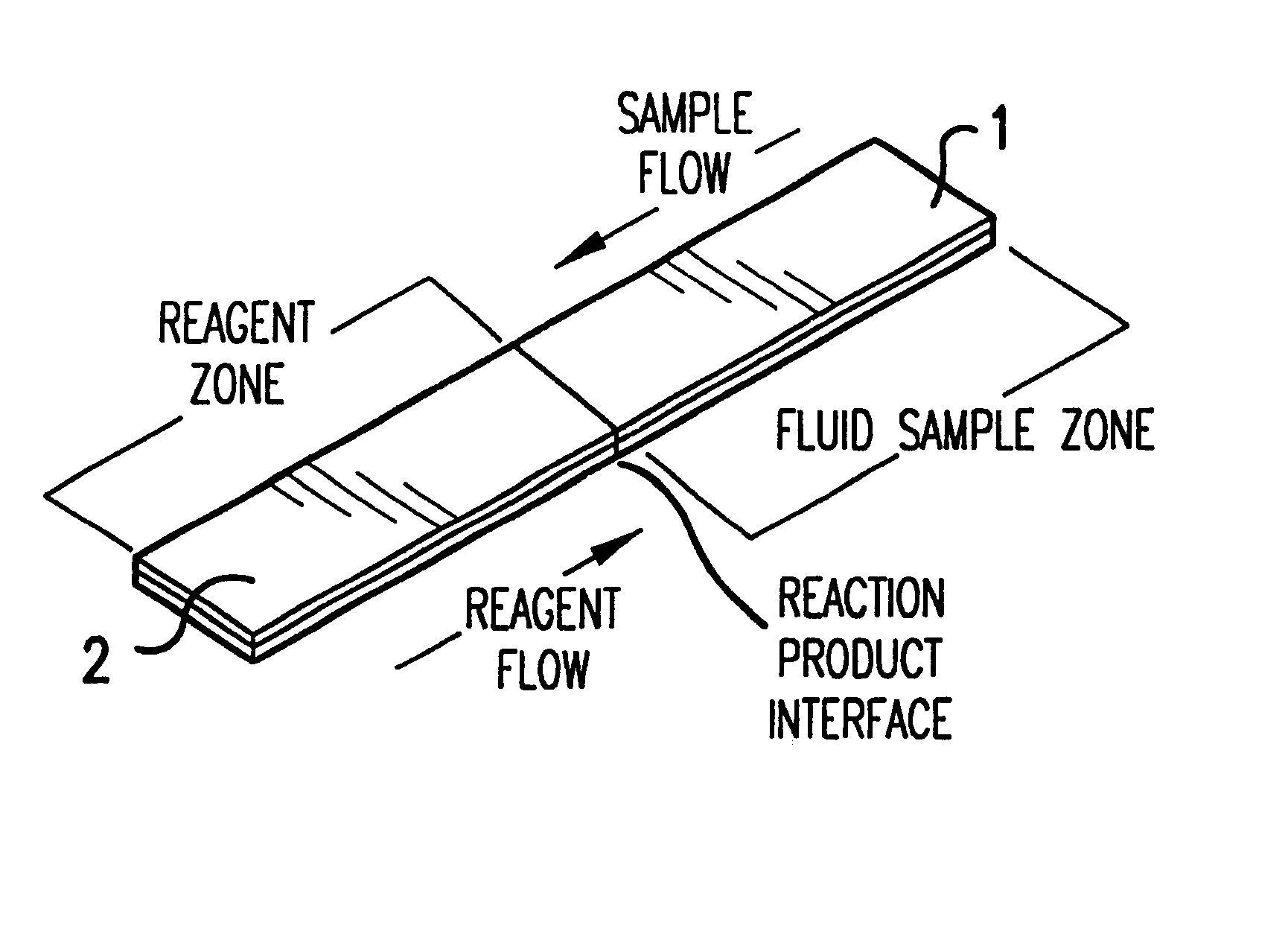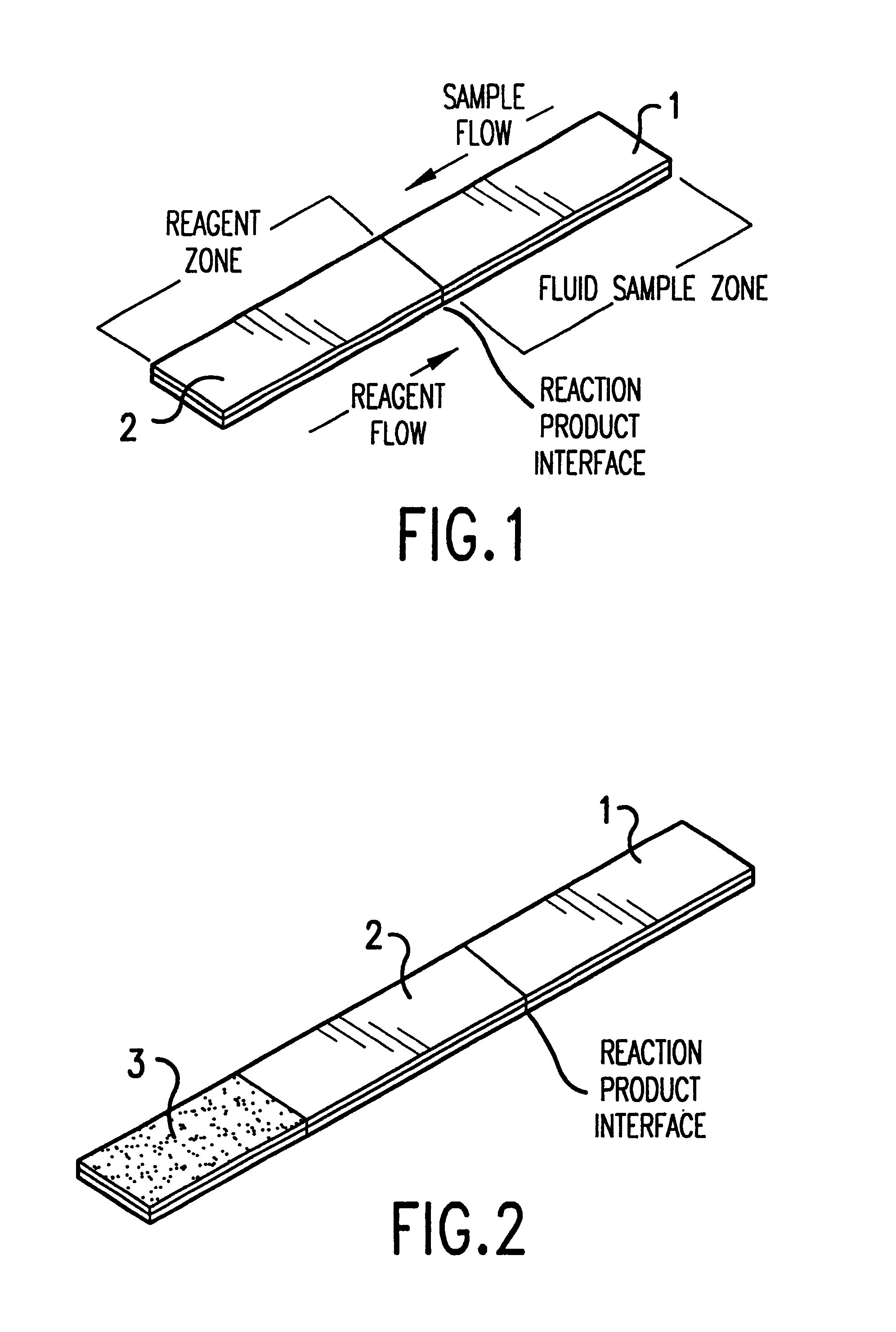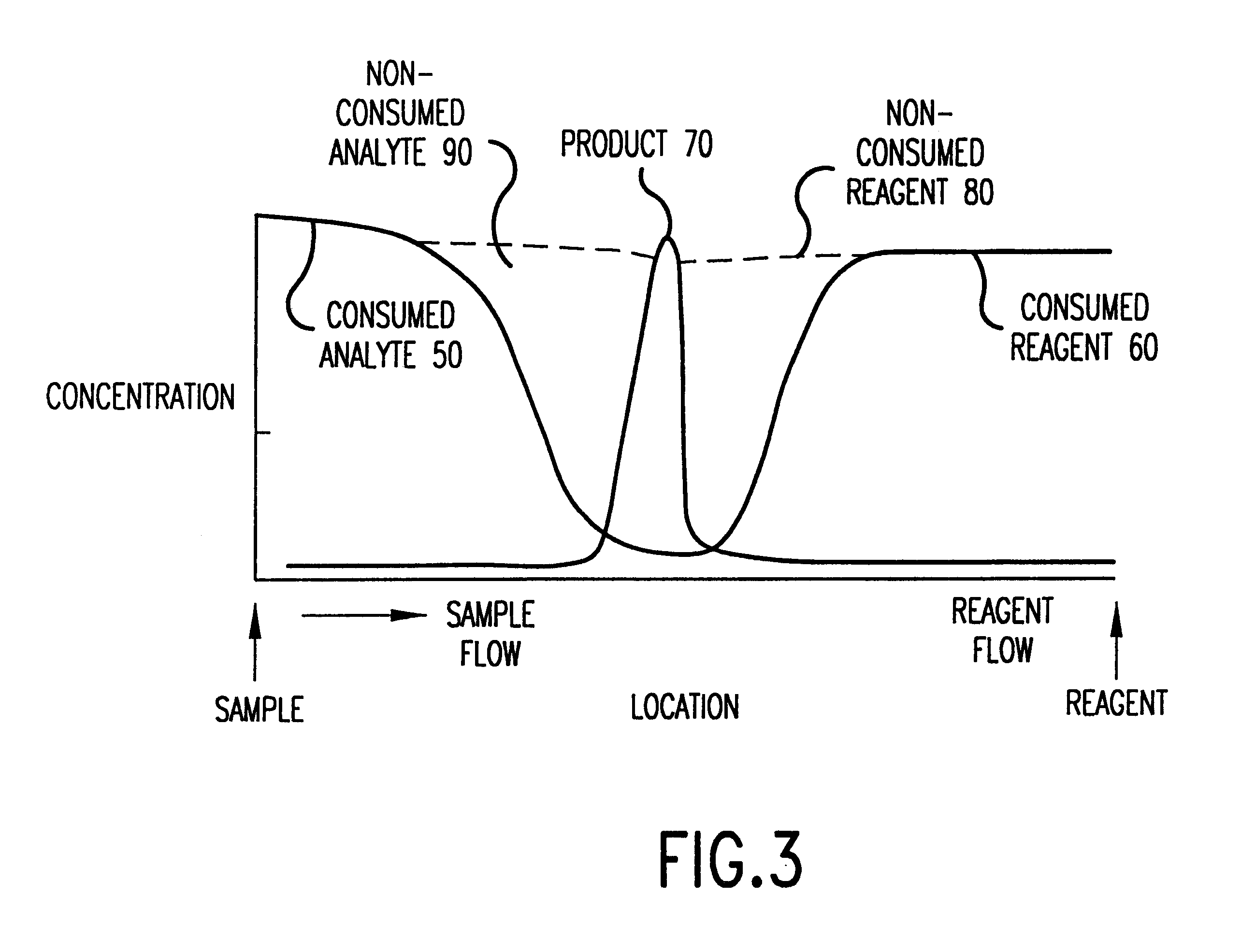Method and device for detecting analytes in fluids
a fluid and analyte technology, applied in the field of fluid and analyte detection methods and devices, can solve the problems of incompatibility, inability to analyze samples, and inability to detect and measure analytes,
- Summary
- Abstract
- Description
- Claims
- Application Information
AI Technical Summary
Benefits of technology
Problems solved by technology
Method used
Image
Examples
example 1
This example illustrates how a device of the present invention was used to determine the presence and concentration (246 mg / dl) of glucose in a sample of whole blood.
A HEMOSEP L.RTM. membrane was affixed to an adhesive plastic backing and cut into 4 mm.times.25 mm strips. Trinder reagent (15 .mu.l) (Sigma Chemical Co., St. Louis, Mo.) containing glucose oxidase (15,000 u / L), 4-aminoantypyrine (0.5 mM), p-hydroxybenzene sulfonate (20 mM) and peroxidase (10,000 u / L) at pH approximately 7.0 was dried onto one end of each test strip, comprising about one-half of the total strip area. This was accomplished by simultaneously dispensing 10 .mu.l of water to one end of the strip (the fluid sample side) and 10 .mu.l of Trinder reagent (at 5.times. concentration) to the other end of the strip (the diluent solution side). The strip was then air dried for 1 hour at room temperature.
After drying, 15 .mu.l of water was added to the outer end of the diluent solution side of the strip at the diluen...
example 2
This example illustrates how the present invention was applied to detect and quantify calcium in fetal calf serum.
Three polyethersulfone membranes were prepared as described in Example 1 and washed with 50 .mu.l of water at pH 2.0. An example of a suitable polyethersulfone membrane for use in the present invention is a SUPOR.RTM. membrane (available from Pall-Gelman, Inc., Port Washington, N.Y.). The person of ordinary skill will realize that other porous membranes with similar characteristics may also be applied to the present invention. Fifteen microliters of fetal calf serum containing 6.8, 13 and 18.6 mg / dl of calcium was added to the fluid sample side of each strip at the fluid sample application site while simultaneously adding 15 .mu.l of acidified Arsenazo III red / purple dye solution to the diluent solution side of the strip at the diluent solution application site. In each case, the two liquids flowed towards each other and upon meeting formed a discrete interface. The blue...
example 3
In this example, 1.2 g / dl and 1.9 g / dl concentrations of albumin in fetal calf serum were tested with the present invention using bromocresol green dye after adjustment to pH 5.5.
FIG. 5, 7 and 10 are graphical representations, and FIGS. 5 and 9 are numerical representations, of the color intensity of the reaction product versus time for both of the 1.2 g / dl and 1.9 g / dl samples. These graphs show that the assay performed in accordance with the subject invention produces a substantial color intensity within five (5) seconds from application of the sample to the test strip of the present invention which is proportional to the original analyte concentration based on slope and final color intensity.
FIGS. 11 through 14 are digital photographs of the 1.2 g / dl and 1.9 g / dl test strips at 200 mseconds (2.0 seconds after sample application to the test strip) and at 3.0 seconds after interface formation (5.0 seconds after sample application to the test strip). These digital images were record...
PUM
 Login to View More
Login to View More Abstract
Description
Claims
Application Information
 Login to View More
Login to View More - R&D
- Intellectual Property
- Life Sciences
- Materials
- Tech Scout
- Unparalleled Data Quality
- Higher Quality Content
- 60% Fewer Hallucinations
Browse by: Latest US Patents, China's latest patents, Technical Efficacy Thesaurus, Application Domain, Technology Topic, Popular Technical Reports.
© 2025 PatSnap. All rights reserved.Legal|Privacy policy|Modern Slavery Act Transparency Statement|Sitemap|About US| Contact US: help@patsnap.com



